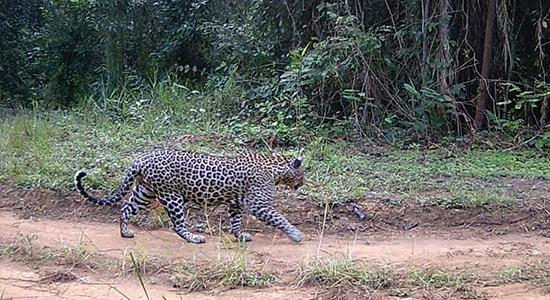Conserving Gabon’s Cultural Heritage
A treasure trove of 14th century artefacts was discovered deep within a conservation area of Olam’s palm plantation in Gabon.
Our Sustainable Palm Oil Policy and our Living Landscapes Policy lay out our commitment to the protection of forests and high conservation value areas such as primary forest, High Carbon Stock Forest (HCS), High Conservation Value (HCV) areas and peatlands.
We're the first company globally to meet the new HCV assessment requirements of the HCV Resource Network. This was done for the Mouila Lot 3 plantation in 2015 by assessors licensed through the HCV Assessor Licensing Scheme, and going through independent peer review.
In 2011 we were the first company to meet the RSPO’s new plantings requirements in Africa for the Awala plantation. All of our concessions are now RSPO certified making us the largest fully certified company in Africa.
For our plantations, we only operate in savannah, scrub, woody pioneer vegetation or logged-over forest areas where carbon stocks are significantly lower than mature forest. We do so only after a third-party assessment (based on a combination of stakeholder consultation, LIDAR mapping, biodiversity surveys and forest inventories) with full public and expert consultation to confirm no presence of HCV, and that development will not have significant negative impacts on conservation in a broader landscape.


We're not planting in any wetland areas, including peat and we've taken the necessary steps to protect water bodies in and adjacent to the plantation areas. It's systematically checked through NPP site verification and various soil studies in all plantations.
We're proud to have received the RSPO Conservation Excellence Award in 2019 based on our strong commitment to establish sustainable oil palm plantations which generate net positive impacts through forest conservation, species conservation and emission reduction on a significant scale in Gabon.
We fully recognise the importance of conserving biodiversity and preserving habitats of animal and plant species.

In Gabon, we’re preserving valuable natural habitats for native species including some listed as endangered as per the IUCN red-list. Elephant (IUCN-VU), chimpanzee (IUCN-EN), gorilla (IUCN-CR) and forest buffalo (IUCN-LC) – as well as a host of lesser known protected, rare or endemic species such as collared mangabey (Cercocebus torquatus, IUCN-EN) and slender-snouted crocodile (Mecistops cataphractus; IUCN-EN) – are protected by national regulation. We’ve planned migration corridors between adjacent conservation landscapes.

We’ve conducted extensive biodiversity surveys during our Environmental and Social Impact Assessments, and supplementary surveys during the start-up phase of operations, to guide land use planning, zoning and management. Once developments are completed, these impacts will be continuously monitored, tracked, and resurveyed every three to five years for better management of conservation objectives.

Gabon is home to more than half of the world’s remaining forest elephants. We’re working to protect these animals and to prevent animal-human conflicts in local communities. We’ve partnered with The Commonwealth Scientific and Industrial Research Organisation (CSIRO) to develop a highly effective and humane sensor that uses harmless light and noise to divert elephants back into conservation areas.
To date, 500 nodes have been deployed, of which 200 units are connected via a mobile network to enable real-time online monitoring within the large plantation area. This research activity is part of our overall elephant management strategy, to increase understanding of elephants’ movements, to design and develop innovative methods to prevent human-wildlife conflicts, and to increase efficiency of the wildlife corridors that we have created across our concessions.
To monitor our large conservation area, we’ve established a long-term partnership with the National Park Agency (ANPN), Ministry of Forestry and in cooperation with WWF-Gabon. Since 2018, we have rolled out SMART (Spatial Monitoring and Reporting Tool) in all our concessions to systematically collect data, measure, evaluate and refine conservation efforts in priority areas. Our HCV team conduct monitoring, which includes 10 -days each month with staff from the Ministry of Forestry and the National Park Agency at each location. The SMART tool allows the team to record observations within the HCV area, and the data captured provide a complete picture of wildlife populations, their movements and any signs of poaching activity, so conversation efforts can be adapted and deployed as necessary.
We’re collaborating with Agropolis Fondation and L’avion Jaune, France in drone application. At this stage, our drone has an ability to cover 7,000 ha per day and provide analysis for this area using in-house software with the capacity of 100 ha per hour. The drone has been used to monitor conservation area including riparian through automated and machine analysis. Any illegal encroachment and logging activities are reported to the relevant local authority.
We applied the use of advanced and innovative instruments for monitoring and prevention of human-wildlife conflict, while also actively engaging and involving local communities in a meaningful manner at every stage of their conservation programmes.
We welcome the ongoing efforts by the international conservation community to define and protect High Carbon Stock forests.
Since 2012 we have worked with independent scientists to measure the carbon stocks of our leases as part of our Environmental Impact Assessments and follow-up work, and we've supplied the data to the Government of Gabon to inform land use planning.
There are several High Carbon Stock (HCS) initiatives in development that relate to our plantations. Firstly, it's necessary for Gabon to set out how it will deliver on its UNFCCC commitment to conserve HCS forests. Secondly, international multi-stakeholder groups comprising NGOs and businesses have been collating the evidence necessary to define HCS for palm plantations and for high forest countries.
In December 2015, the High Carbon Stock+ Science Study was launched following independent testing of its methodologies in our Palm and the Government of Gabon’s Mouila plantations, demonstrating the potential viability of carbon neutral, equitable and transparent plantations. The methodology seeks a holistic approach that achieves carbon neutrality and protects biodiversity, ensures socio-economic benefits for local communities and achieves economic viability.
As part of the rigorous testing by the independent HCS+ Technical Committee led by Sir Jonathon Porritt and Dr John Raison, we put forward its oil palm operations in Gabon to “assess the feasibility of the HCS+ methodology in real world conditions”, particularly for those countries such as Gabon that have extensive forest cover.
In the second half of 2015 the Technical Committee successfully tested the HCS+ methodology in Gabon against three main areas:
The results demonstrated that it's technically possible to create carbon neutral plantations, even in a heavily forested country like Gabon. In our case, based on historic data, the methodology estimates that the Mouila plantations will fix around 1.3 million tonnes of carbon (4.8 million tonnes CO2 equivalent) over the first 25-year rotation.
This is due to the plantations being mainly in savannah grassland (palm plantations contain far more carbon than grasslands), and to the large areas of logged forest which have been set aside in HCV areas (over 50% of our total concession area) that are expected to fix large quantities of carbon as they regenerate and recover under the active protection of our management. This approach is key to the HCS methodology – rather than avoiding or given back HCV concession areas, oil palm companies are rewarded for effective conservation efforts, helping to prevent illegal logging and maintain carbon stocks.
The Olam HCS+ case study is published as an Appendix to the Independent Report of the Technical Committee. See pages 76 – 101.

While the debate continues around an HCS definition that can be applied across all growing countries, we now have a robust methodology to minimise or even eliminate any negative climate impacts of our own plantations. We hope that the advocates of zero-deforestation, forest conservation and carbon neutral agriculture will eventually converge on a single HCV-HCS framework so that the whole of the industry can work towards an objectively verifiable goal of 100% sustainable palm oil. In the meantime, we will continue to support the science underpinning HCS methods and the land use policies required in Gabon to achieve our commitment to forest conservation.

A treasure trove of 14th century artefacts was discovered deep within a conservation area of Olam’s palm plantation in Gabon.

Managing palm plantations in a biodiversity rich country like Gabon requires extensive efforts to support and safeguard the country’s natural heritage.
